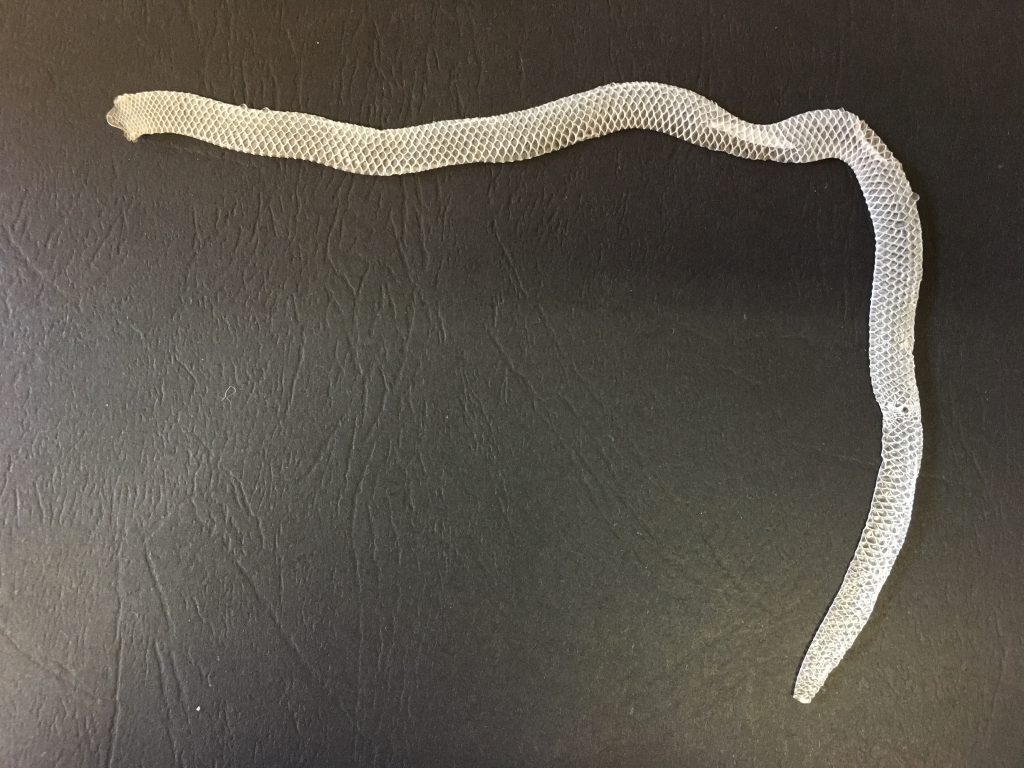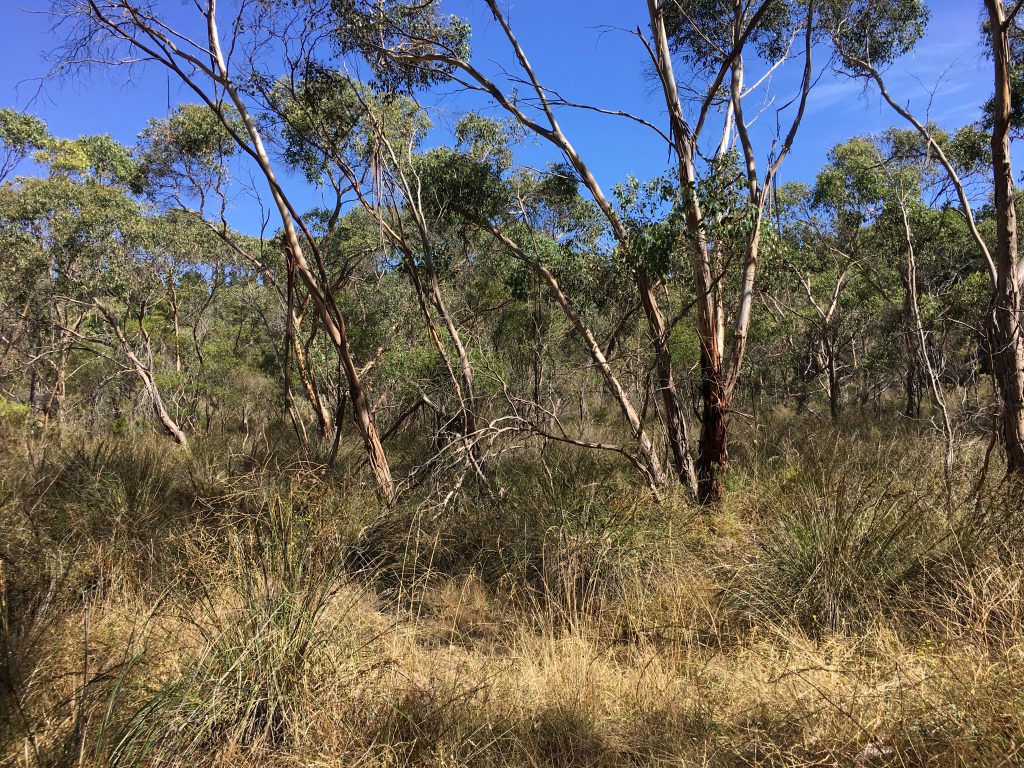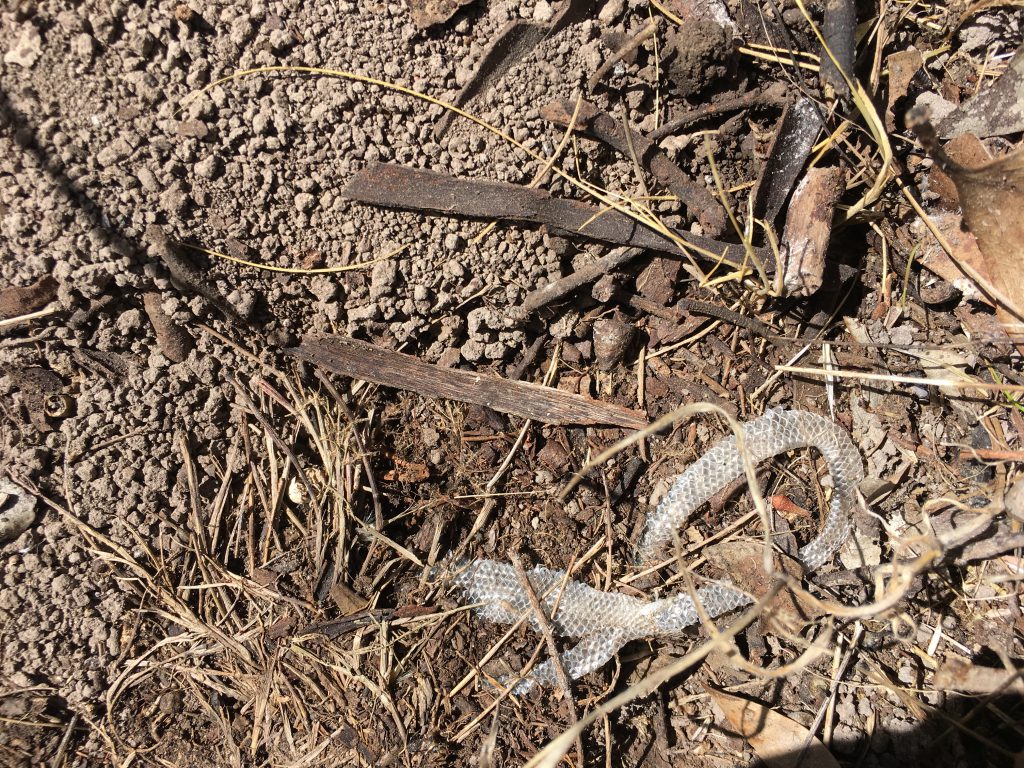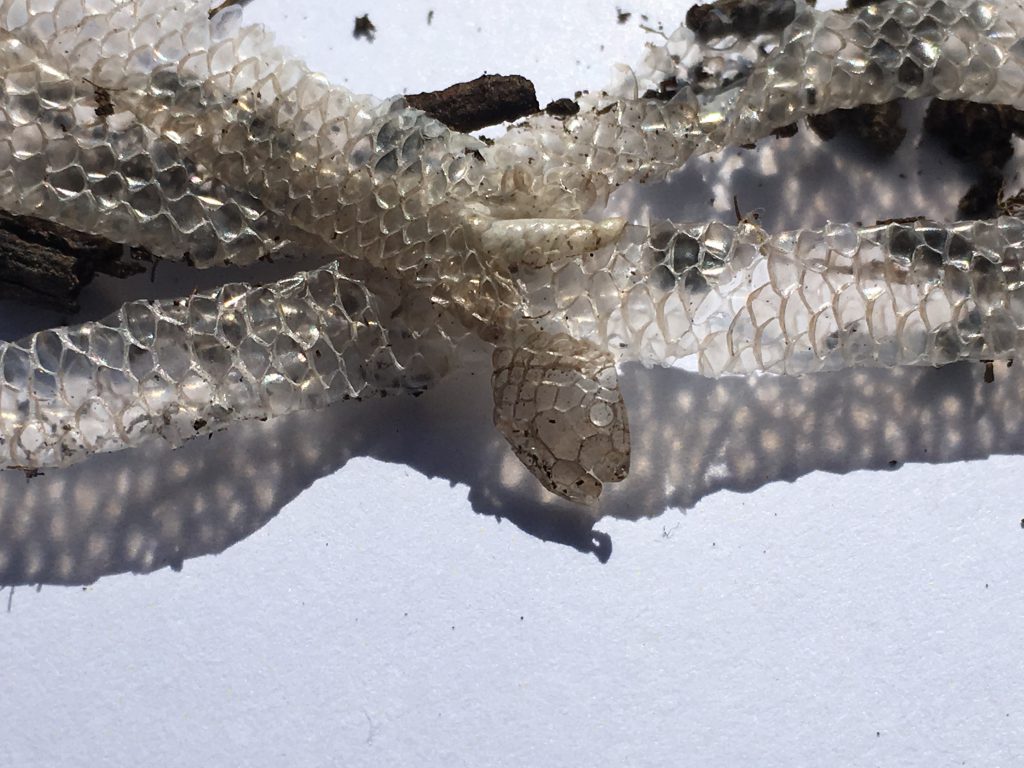Two new populations of Eared Worm-lizard discovered!
I must admit, I wasn’t too optimistic about the new tile grids established in 2016. The Swamp Gum Woodland vegetation type seemed quite promising, but summer surveys in 2017 and 2018 had only found skinks and brown snakes!
But on a warm, overcast day in late February 2019 under tile number 1.1, I found it – a fresh Aprasia aurita skin! It was almost intact with only the head missing. What was also surprising was the length of it; at 21cm it is by far the longest Eared Worm-lizard I have recorded. Before this, all lizards had been between 10cm and 15cm.
Since monitoring began in 2012, NGT has discovered A. aurita populations at nine grid sites within the Reedy Creek Range. The four new tile grids were established in December 2016 in locations chosen to investigate any links between A. aurita distribution and Swamp Gum Woodlands vegetation with Cutting Grass (Gahnia trifida) in the understorey.
Then I discovered two A. aurita skins at another of the new grid sites in mid-March; one under a tile atop a jumper ant nest, and the other under an adjacent tile.
There are a few distinct characteristics that help identify A. aurita skins from its other legless cousins such as the Lined Worm-lizard (Aprasia striolata) and the Striped Legless Lizard (Delma impar):
- 14 mid-body scales (A. striolata has 12, D. impar 13-16)
- Ventral scales same size as body scales (D. impar ventrals wider than body scales)
- Tail shorter than body (D. impar tail is 2-4 times the length of the body)
Across all our tile grids, live A. aurita (only four) were seen in January to early February 2019, then in late Feburary to March fifteen fresh A. aurita skins were collected, suggesting late summer – early autumn may be when A. aurita shed their skins.
I hope that in future surveys we may catch the lizards that shed these newly-found skins, and continue to learn more about the population and habitat requirements of these elusive creatures.




